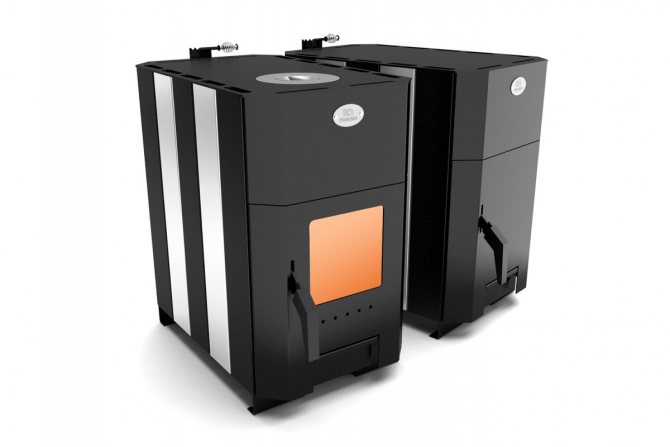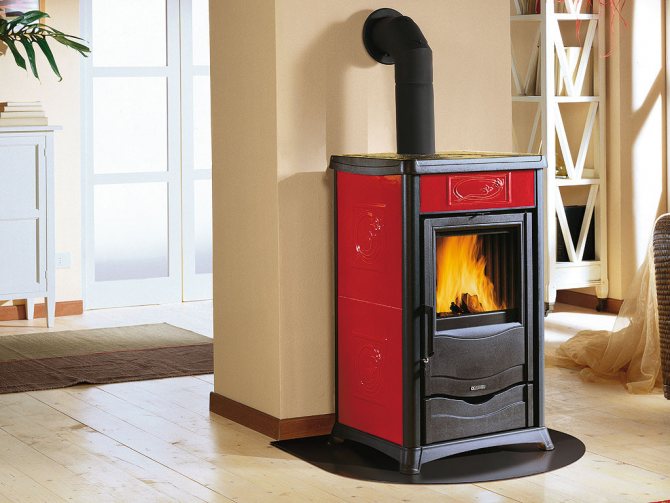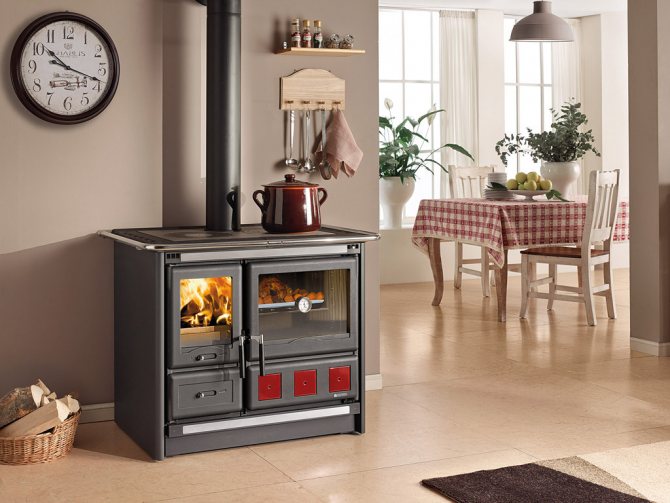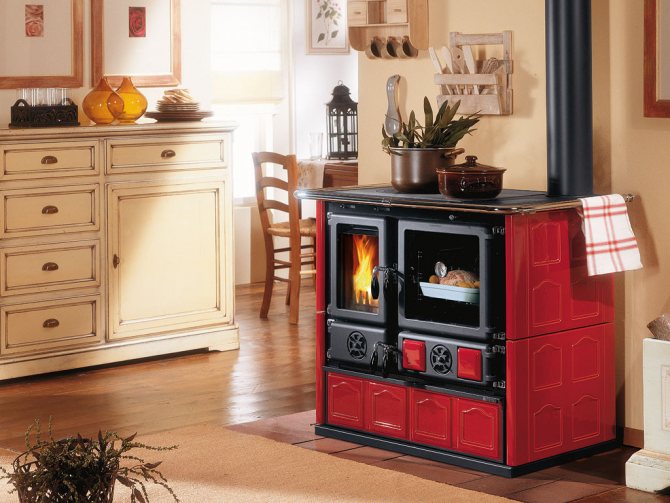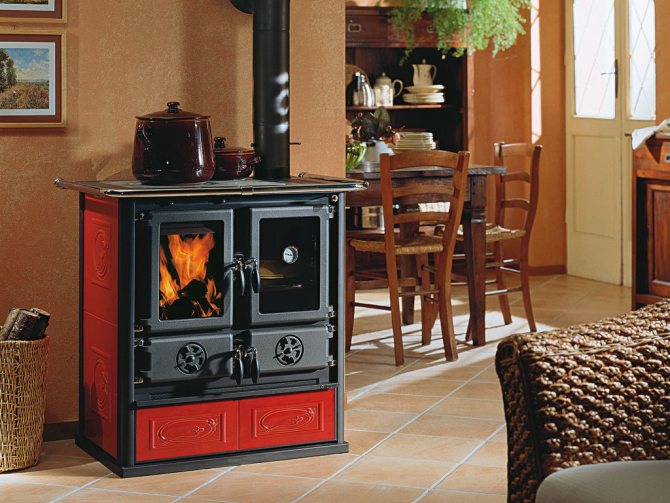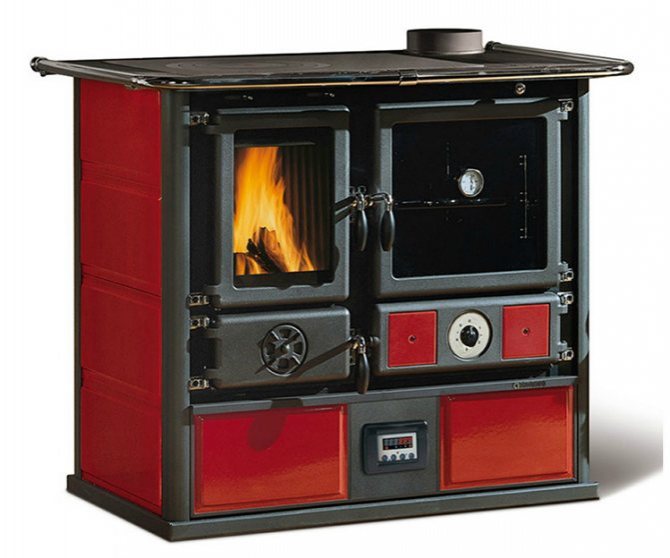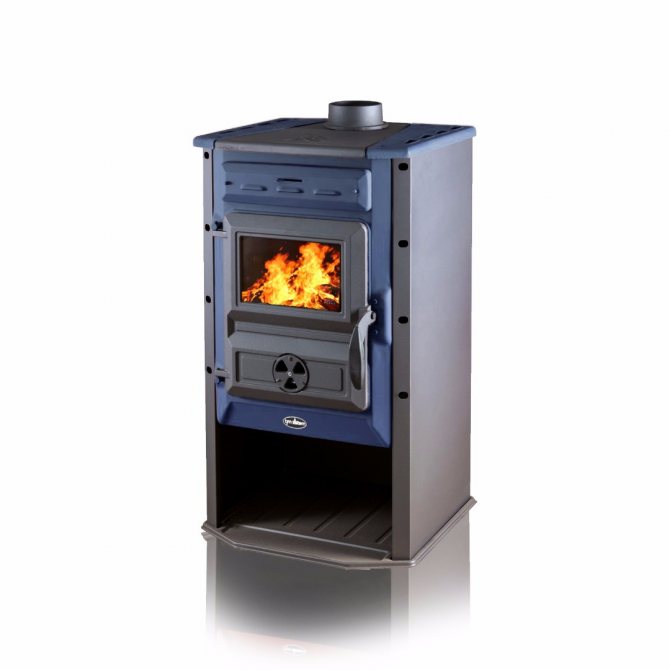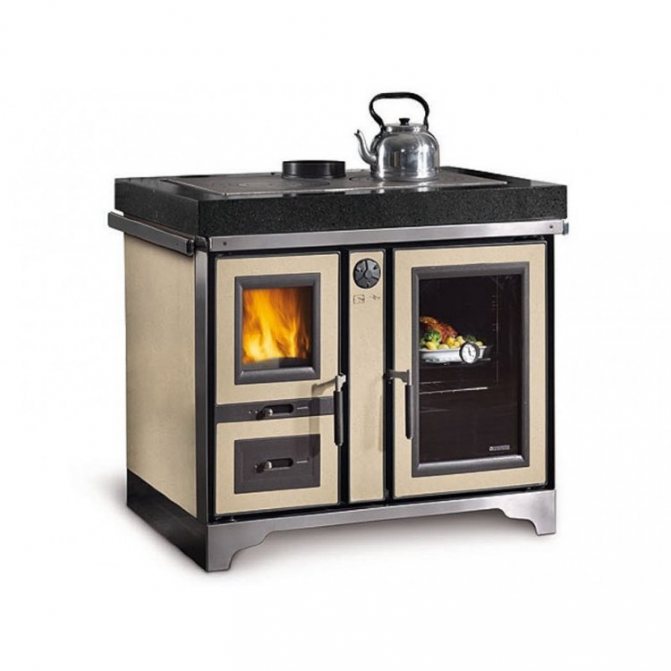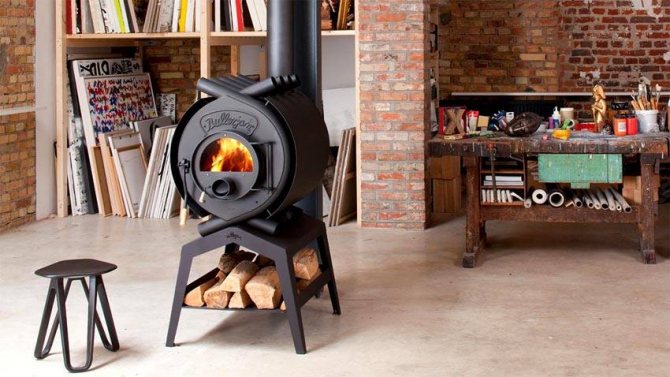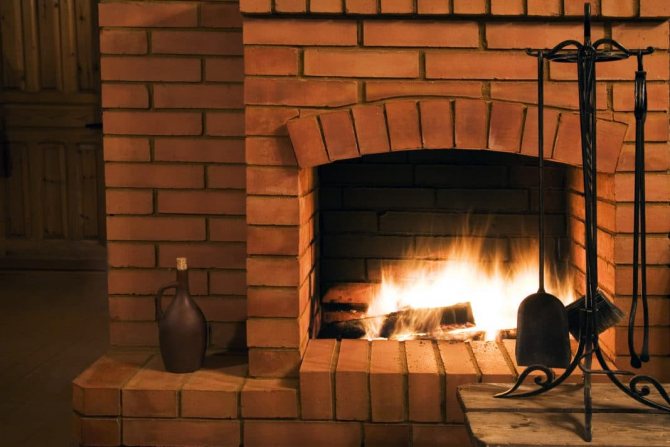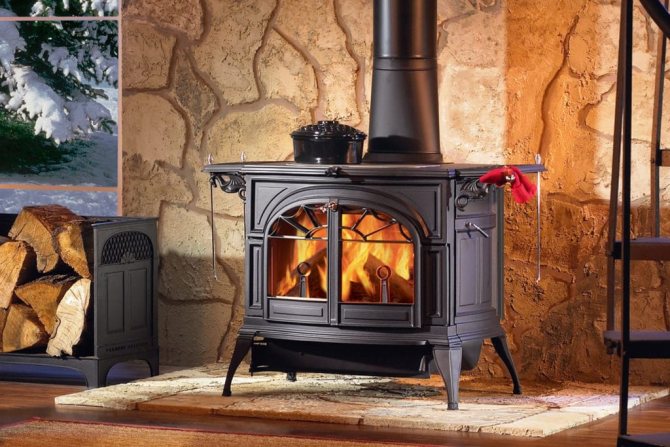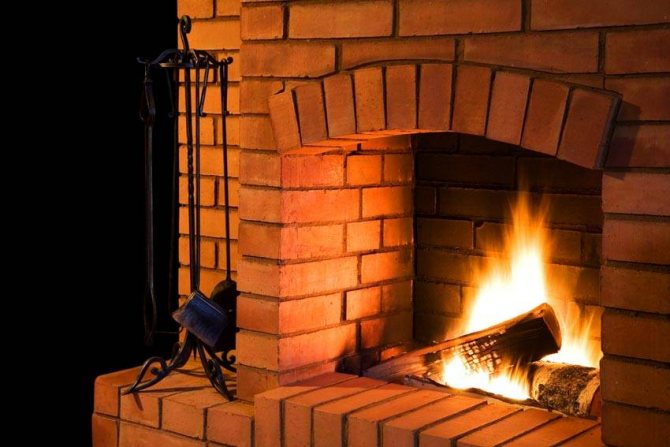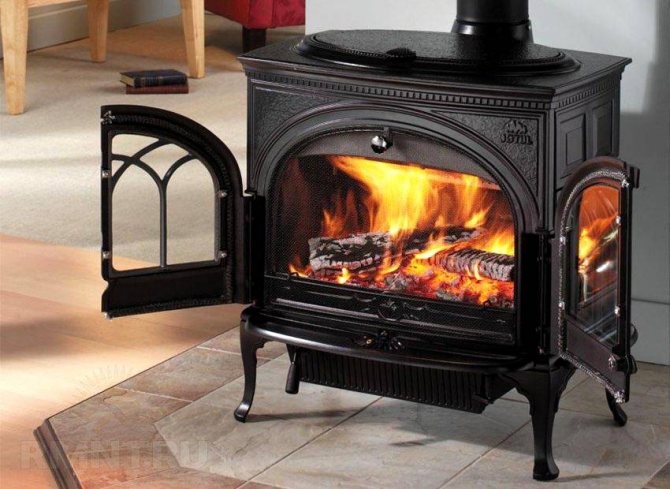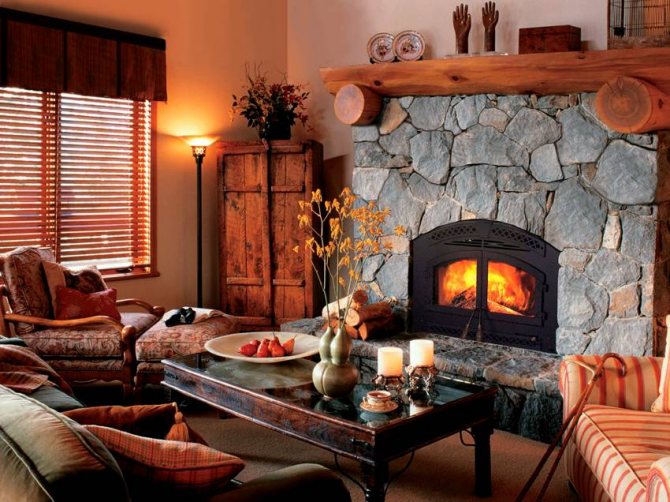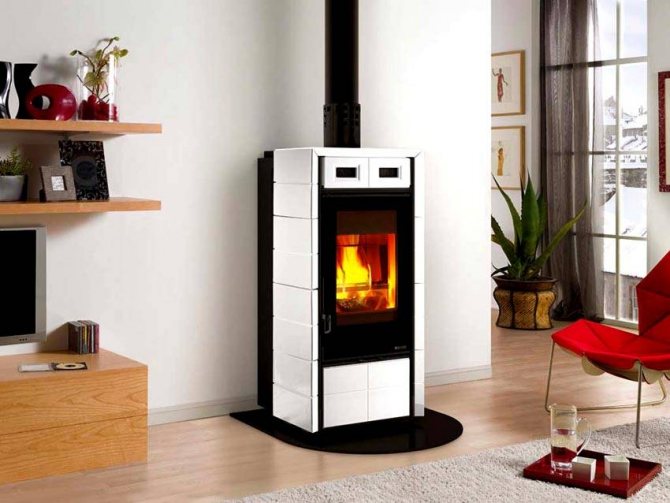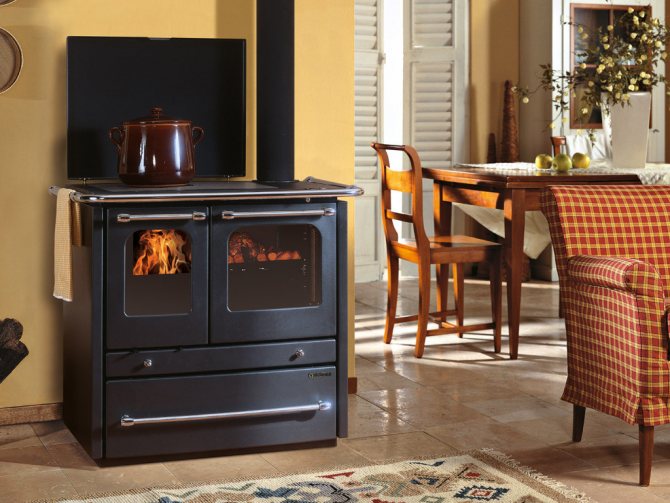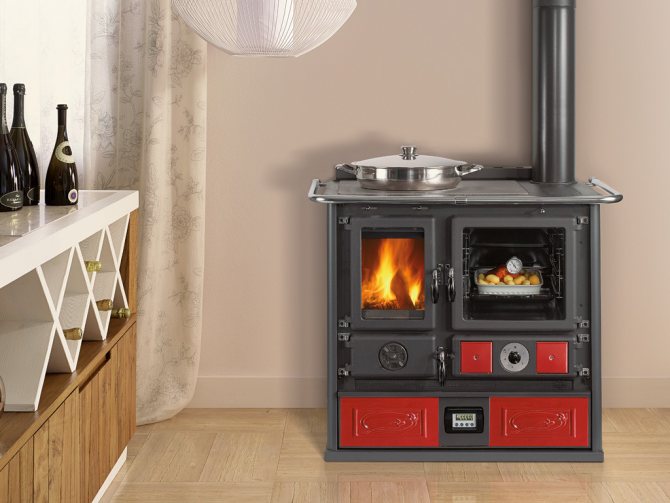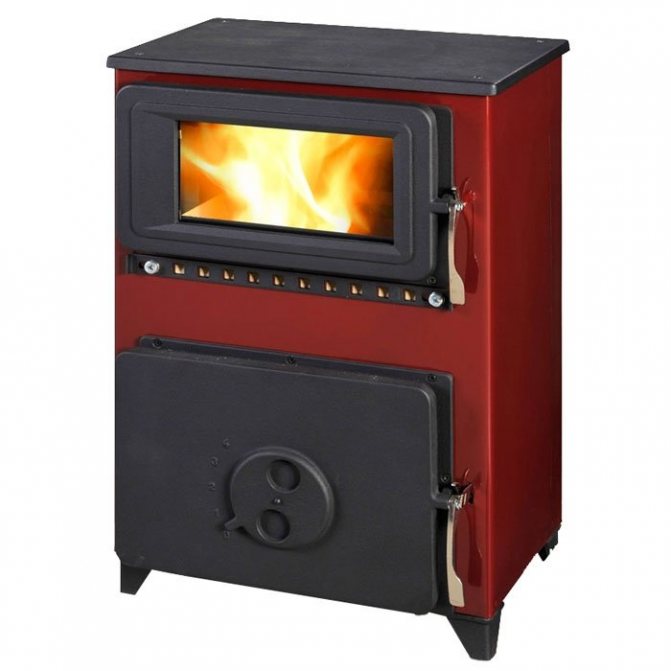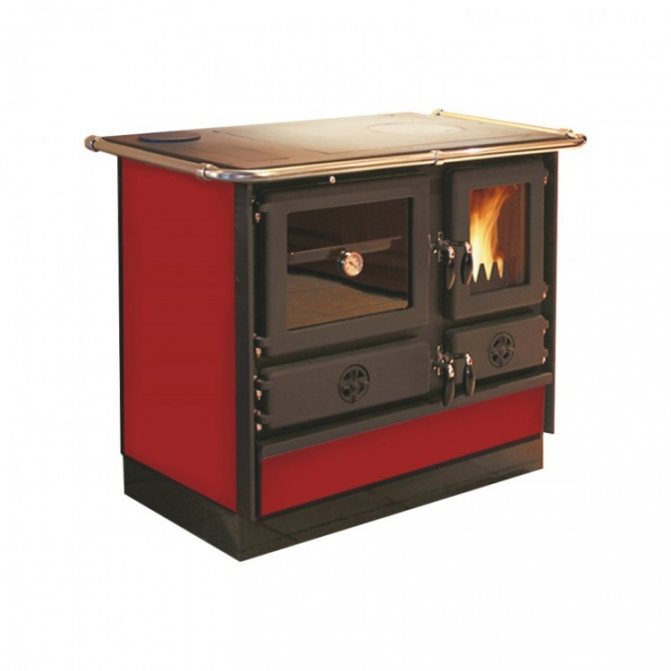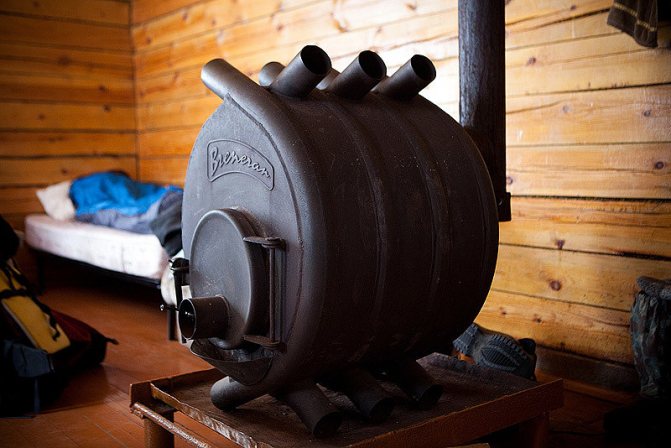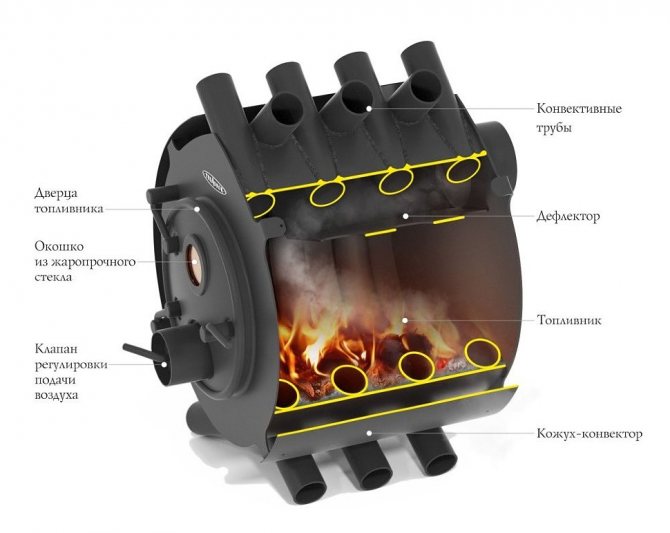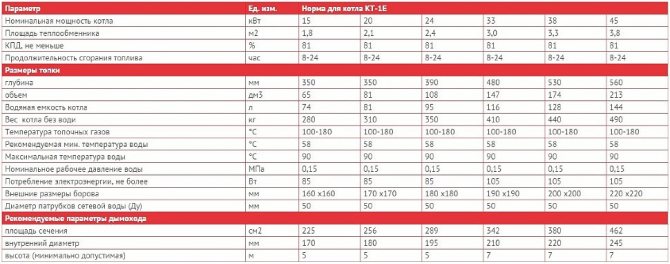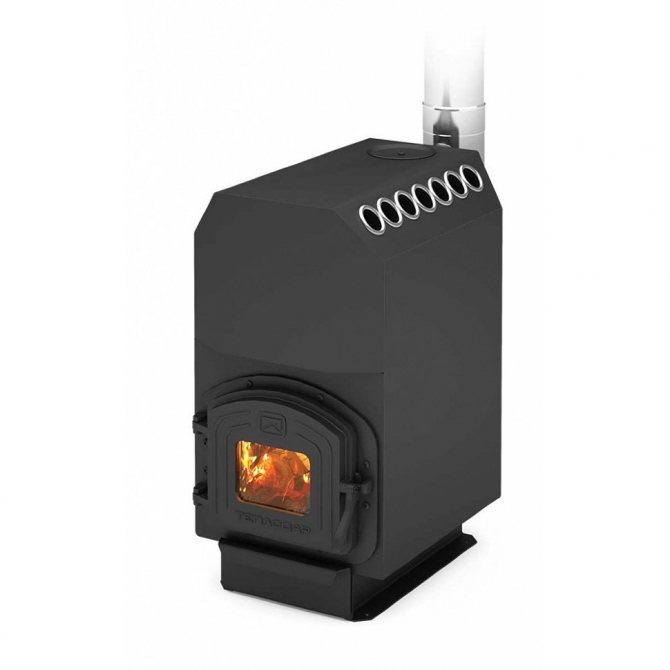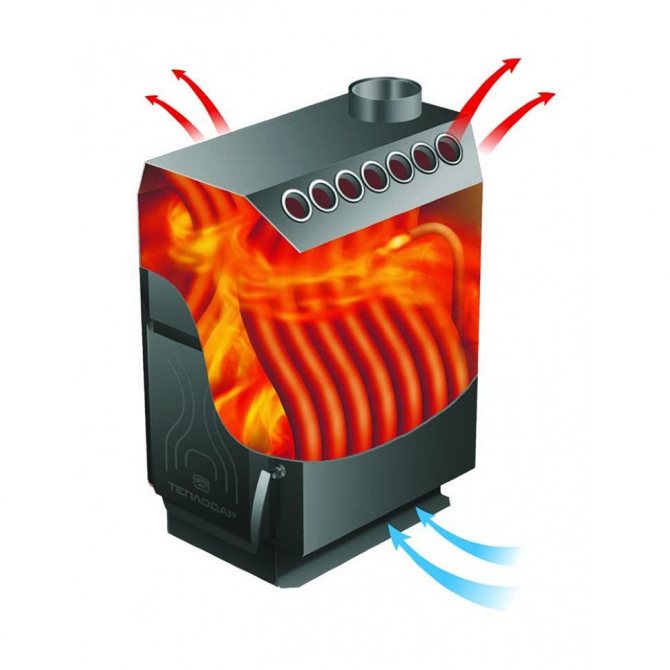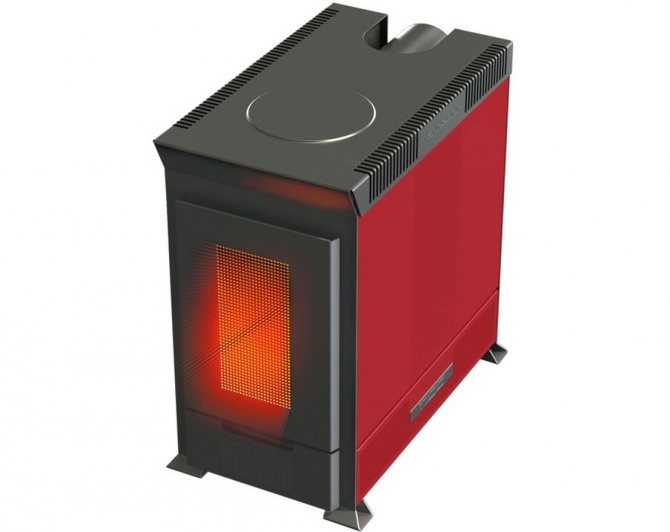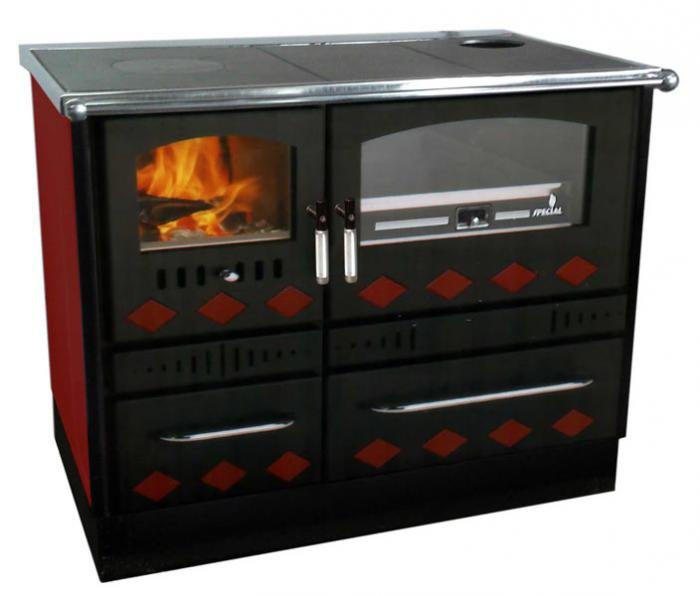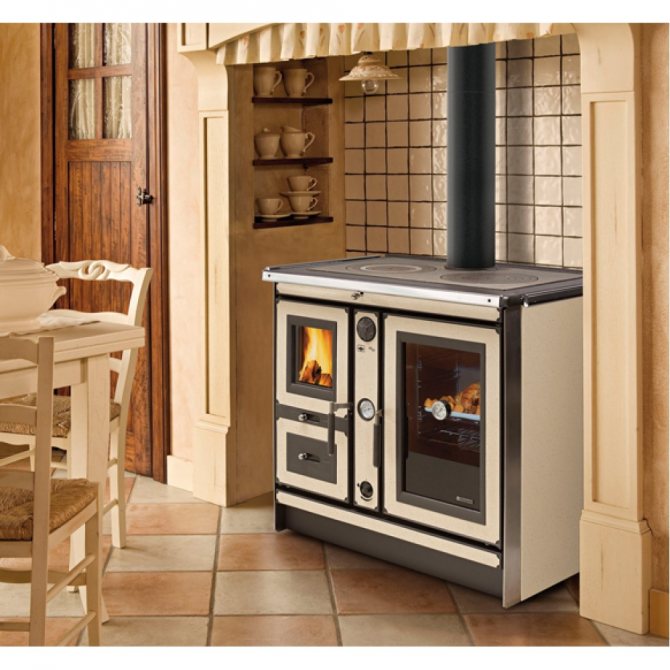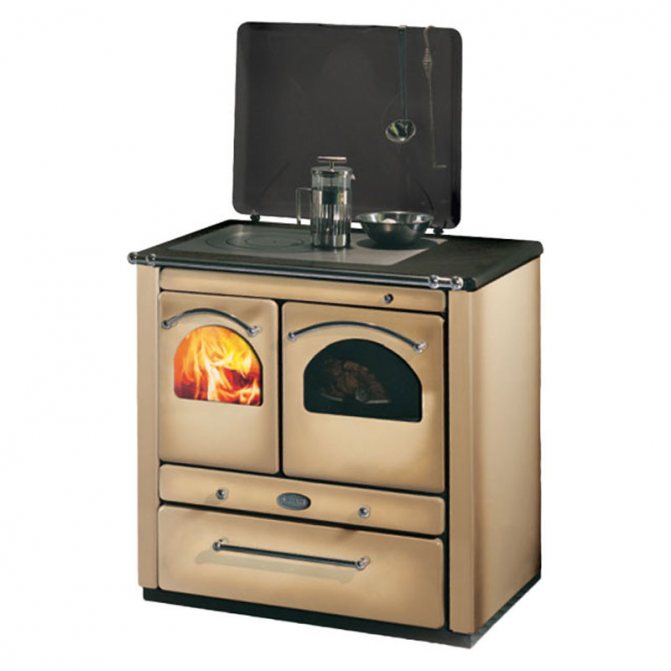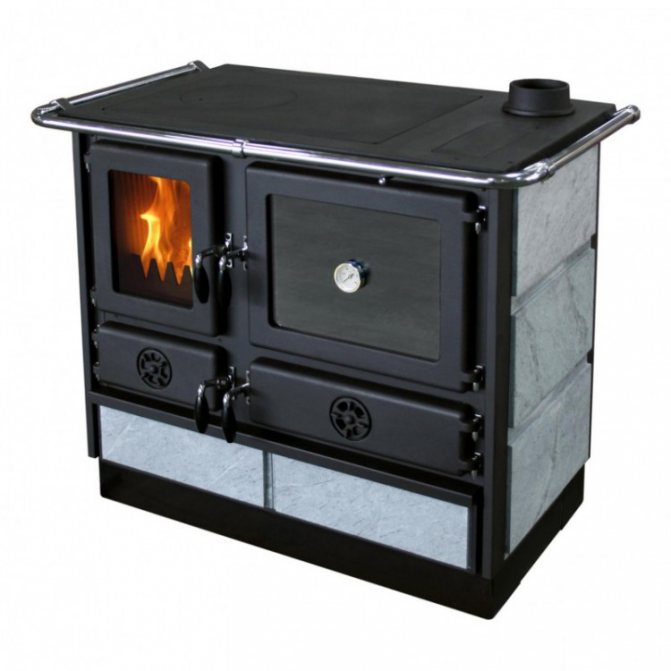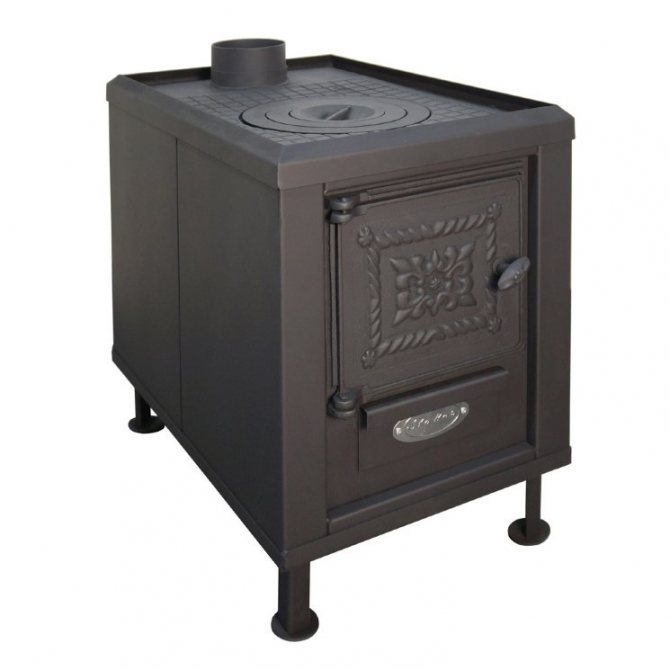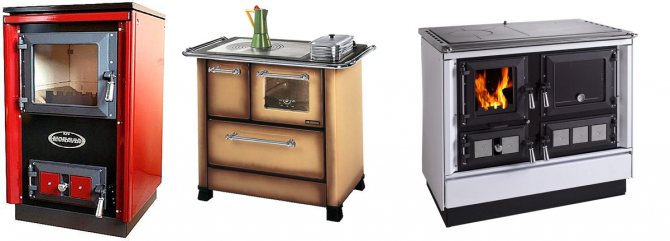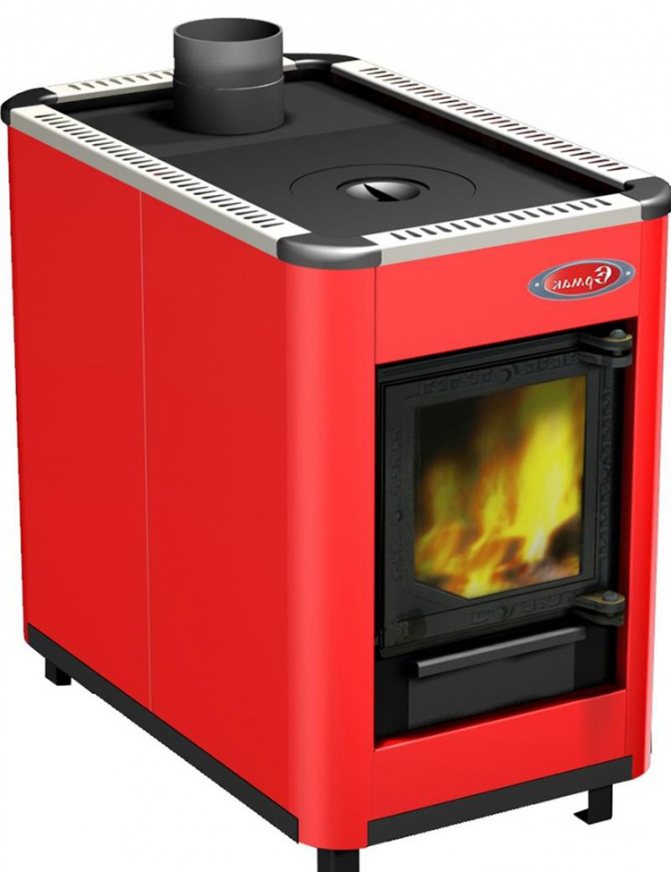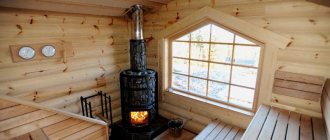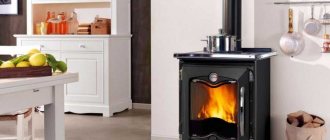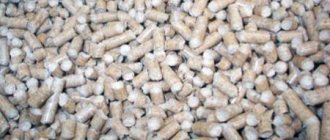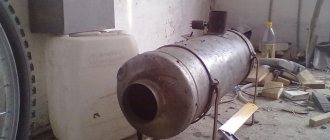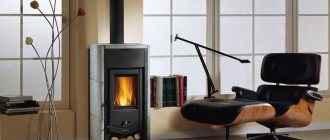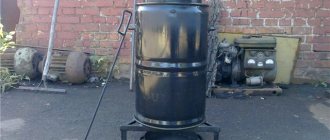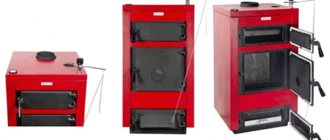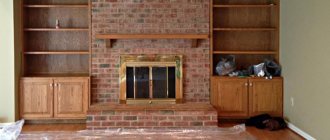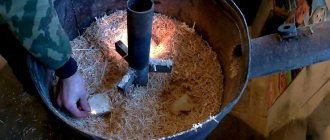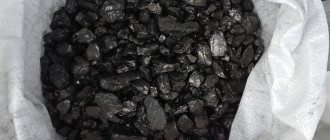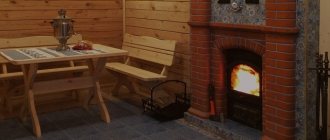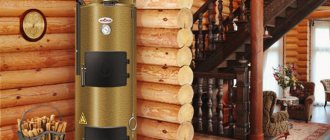| A place | Name | Feature in the rating |
| Top 10 best long burning fireplaces |
| 1 | ABX Helvetia K | Best design |
| 2 | THORMA Borgholm Keramik | The most accurate production |
| 3 | Invicta regent | Cast iron fireplace in classic style |
| 4 | La Nordica Ghisa Isotta Con Cerchi | Fireplace with hob |
| 5 | Romotop STROMBOLI N | Compact fireplace in modern style |
| 6 | EcoFireplace BAVARIA OPTIMA Forget-me-not | Best budget option |
| 7 | ABX Vermont | The most unusual design |
| 8 | META Viking | Long work on one bookmark |
| 9 | La Nordica Wanda Classic | Exquisite design and usability |
| 10 | Austroflamm Fynn Xtra | Longest heat storage |
In the apartment, we do not need to worry about warmth in winter - central heating is responsible for creating comfort. But dachas and country houses that are not intended for permanent residence are often heated using stoves. But an ordinary oven is boring and unproductive. There is a more interesting and modern solution - fireplaces with a long burning system. On one load of firewood, they can work up to 12 hours, filling the house with truly cozy warmth. And what are the evenings spent in front of the fireplace, under the soothing crackling of burning logs and watching the fire. There are many models on sale - there are very expensive and quite budget ones. In this rating, we have included only the best long-burning fireplaces that will warm you on long evenings in the country or in a country house.
Rating of long burning ovens

Focusing on the variety of technical parameters and the price / quality ratio, we can distinguish some manufacturers on the market. From domestic enterprises, the Teplodar ovens can be distinguished.
This is a fairly reliable product, distinguished by thoughtful design and execution. From foreign manufacturers, we can recommend Finnish ovens, as well as the products of the Canadian company Buleryan and its joint ventures. The list of recommended manufacturers on the market looks like this:
- Teplodar;
- Thermophore;
- Ermak;
- Finnish stoves;
- Buleryan.
In conclusion, a little more detail about the products of these companies with a short characteristic of the furnaces that they offer.
Features of wood-burning fireplaces for home
Each owner of a country house had a need to install a heating system in his house. Currently, there is a suitable option for any type of premises. Having started the choice, you need to take into account the power consumption of the device and start here from the standard calculations required for heating 10 m2, this is approximately one kilowatt.
It is worth considering that these calculations are very arbitrary, due to the peculiarities of the structure of the dwelling.
During the installation of the stove, it is imperative that a chimney is present, because it is this device that determines the output of gas and smoke, and also the level of combustion efficiency.
Before installing a wood-burning fireplace stove, you must first prepare the materials for work and measure the room
There are several basic steps in choosing a fireplace stove.:
- Fireplace type;
- Indoor location;
- Choice of material and finishes;
- Heat dissipation;
- Study of technical parameters.
All this suggests that you can face serious problems when choosing a fireplace stove. In the traditional plan, fireplaces heat a certain part of the house to a minimum, which may require significant investments, even touching the construction of the foundation for such a stove.Gas or electric fireplaces are functional only in those places where reliable supply of sources is provided for this. These practical "helpers" combine both the heating function and the preparation of food. Therefore, when choosing a fireplace stove, it is worth focusing on the additional characteristics of such devices.
How to increase the efficiency of the fireplace
The increase in efficiency is relevant for any device. Among fireplaces, the question of how to increase efficiency is most relevant for wood-burning fireplaces, because this indicator is minimal for them. Therefore, the bulk of the efficiency improvement methods described below will be applicable to them. So, to increase efficiency, you can and should resort to the following actions:
- Timely cleaning of the fireplace. An integral companion of the operation of a wood-burning fireplace is the formation of ash. Its accumulation in the ash pan makes it difficult to circulate air in the firebox, which negatively affects the process of burning firewood. Therefore, it is worth regularly removing it from the fireplace, as well as cleaning it from the chimney, since its accumulation on the walls of the pipe contributes to a significant decrease in the efficiency of heat transfer.
- Closing the damper. Whenever firewood burns out, you need to shut off the air supply to the firebox. This will help to avoid the loss of warm air through the chimney. In addition, after long-term operation, the damper may deform and no longer provide a hermetically sealed pipe. In this case, it must be replaced.
- Use only dry wood. If you heat a fireplace with damp wood, a significant part of the energy is spent on evaporating the water.
- Use of advanced fuels. Currently, special pelleted fuel for fireplaces is produced. When it burns, a much larger amount of thermal energy is released, in addition, it is accompanied by a smaller amount of combustion products. This is beneficial not only from the point of view of the maintenance of the fireplace, but also from the ecological point of view.
- Using a water circuit. As you know, water has a high heat capacity. Therefore, by placing in the immediate vicinity of the firebox a radiator unit with a system of pipes that diverge through the house and circulating water inside, it is possible to achieve a significant increase in the efficiency of the fireplace as a heating device.
- Use of heat storage elements. The main problem of fireplaces with a chimney is the release of a significant part of the heat through it (the combustion products have a very high temperature at the exit). This effect can be partially neutralized by installing heat accumulating devices in the chimney.
All of the above techniques can be used at home without the help of professionals. Compliance with these simple rules will increase the efficiency of the fireplace to an acceptable value without having to replace the firebox.
Advantages and disadvantages
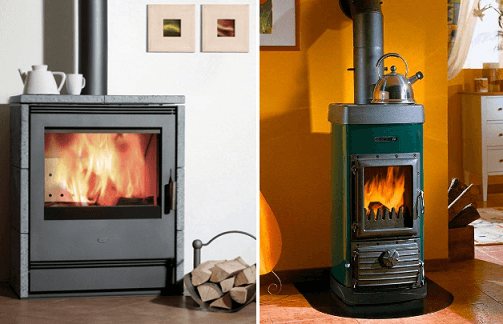

The advantages of wood burning models for the home are obvious. You will not need to heat around the clock. One loaded furnace firebox will burn for 8-10 hours. The main disadvantage of operating this type of furnace, oddly enough, is their high efficiency. The fact is that the flue gases at the outlet, giving off their energy, have a very low outlet temperature (130 - 180 C). Therefore:
- In such devices for long burning, the thrust is much less;
- A lot of condensable substances (water, tar, soot) form in the chimney and if the chimney is installed incorrectly, this can lead to frequent blockages.
The listed problems have been solved technically for more than 20 years of experience in the widespread operation of such heating technologies. Standard pipes and chimneys are produced by manufacturers, the installation schemes are described in the instructions, the declared passport parameters from bona fide suppliers correspond to reality.
Wood-burning fireplaces for summer cottages
According to the technology of their equipment, wood-fired fireplace stoves practically do not differ from the design of their "progenitors". They are divided into two categories - as a device with an open and closed firebox. The equipment of a fireplace with a closed system assumes an open fire fence with the help of special doors made of heat-resistant material that increases the efficiency.
With such a device, the unit forms its heat transfer through the reflection of heat fluxes inside the surfaces of the fireplace.
It is advisable to install a fireplace stove of the type of a closed firebox in houses with small children, pets and, in general, with an increased risk of fire due to excessive safety requirements.
A wood-burning fireplace stove is perfect for arranging a country house.
The heating system of wood-burning fireplaces has the following components:
- Chimney;
- Firebox;
- Facing.
In the modern world, more advanced technologies are used for the production of wood-burning fireplaces and they are made from completely different materials. This of course enhances all characteristics, both practical and external indicators. By their location, such hearths are divided into two types: corner and wall-mounted furnaces. This allows you to make a choice in accordance with the characteristics of the room.
conclusions
Many users, still in the old fashioned way, prefer long-burning stoves with a lounger, like the Buleryan model. But this option is more suitable for the most spacious country houses. The model is selected depending on:
- Insulation.
- Appointments.
- Room area.
Today, the most popular fireplace stove for giving long burning, performing two actions at once: a heating model with a place for cooking. You can choose a compact model and inexpensive in cost. Our video review will help you choose the right model, and tell you about the intricacies of using it in everyday life.
Increasing the efficiency of the furnace and the duration of its operation on one tab
Furnaces are sold in a form configured for a specific operating mode. As a rule, the devices are set for a gentle operating mode. However, the manufacturer cannot foresee in what specific conditions the furnace will be used and what kind of fuel the consumer will use. So the capabilities of the oven are much wider than the factory settings. In some cases, it will be correct to reconfigure the device to a higher or, conversely, a lower power.
Changing the oven settings to a suitable operating mode will be optimal in the following cases:
- If during the operation of the device the intensity of the firewood burning is too high, and the bookmark burns out in three to four hours. Moreover, even when using dry high-quality firewood.
- The fuel does not burn out completely, that is, after the bookmark burns out, undecomposed parts of the wood remain.
If these shortcomings are found during operation, it means that the furnace settings need to be adjusted. Otherwise, the device will not work at full capacity, not giving the expected effect.
You should not undertake to reconfigure the unit yourself, as you can aggravate the situation by knocking down old and incorrectly setting new parameters. The adjustment process should be carried out by a specialist who understands the essence of the problem and knows the ways to eliminate it.
How not to be mistaken with the power of the selected model
The general rule for calculating the required amount of heat for heating a well-insulated building is also applicable for long-burning fireplaces. In general, 1 kW of thermal energy is required for every 10 m2 of heated space.
Most fireplaces without a water circuit develop a power of 4 to 12 kW. This is quite enough for heating a small country house or cottage with a total area of up to 150 sq.m.
Water-jacketed fireplace stoves often reach a power of 25 kW.The manufacturer usually indicates how much of it is released in the form of thermal radiation and how much energy is given to the water. These data should be taken into account when choosing a room for installing a fireplace and designing a coolant circulation scheme.
If you have assimilated the theoretical part of the information presented here without any problems, then you can consider yourself ready to choose a specific model.
Types of corner fireplaces
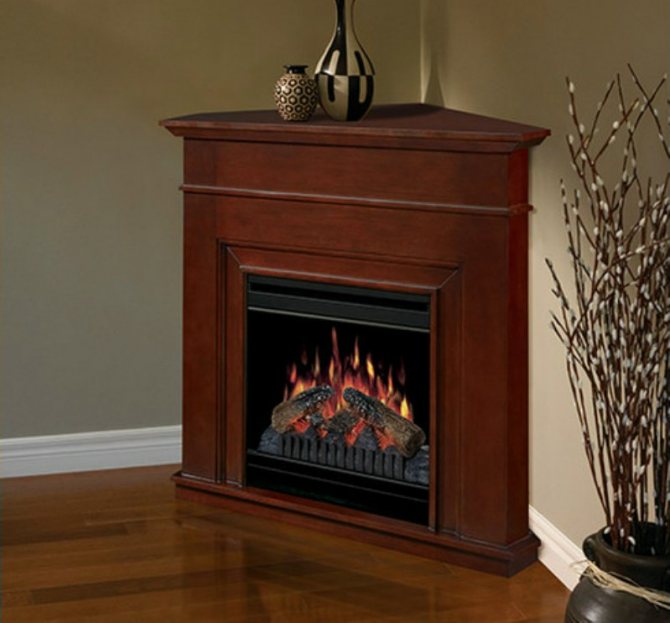

An electric fireplace can be installed in an apartment
The classic corner fireplace consists of a portal (body), a firebox, an ash pan, a grate, and a smoke exhaust system. Today there are several types of heating facilities.
Electric fireplace
Floor-standing and back-to-wall models are installed in apartments without permission. The device looks like a standard heater with simulated flames and embers. A corner electric fireplace is inexpensive and easy to operate.
Fireplace stoves
They support long-term burning, work on solid fuel. The facade is semicircular, which provides an extended view of the fire. At the moment of combustion, heat is reflected from the walls and evenly distributed throughout the room. The following brands are included in the user rating of fireplace stoves:
- Teplodar wood-fired. The difference between the structure is its compact dimensions, the efficiency is 95%. Suitable for baths, combined with steam generators;
- Bavaria with the upper outlet of the smoke ducts. A slightly elongated device has a power of 9-12 kW and is designed for a room volume of up to 180 cubic meters. A decorative look is created by a heat-resistant tile cladding, and functionality is created by a high-quality hob;
- Eurokom, which maintain a long burning mode. The Polish cast iron apparatus is equipped with a hob;
- Godin with futuristic or classic designs. French products are manufactured in cast iron, steel, with a tile lining. Thanks to the secondary afterburning system, the living room, kitchen or the entire home is heated qualitatively;
- Neva from a Russian manufacturer. Firewood is used as fuel. The cast-iron stove has small dimensions (0.87x0.64 m), but it will warm up the house by 60 m2 with high quality.
All fireplace stoves are suitable for installation in country cottages, summer cottages, in the private sector.
Bio fireplaces
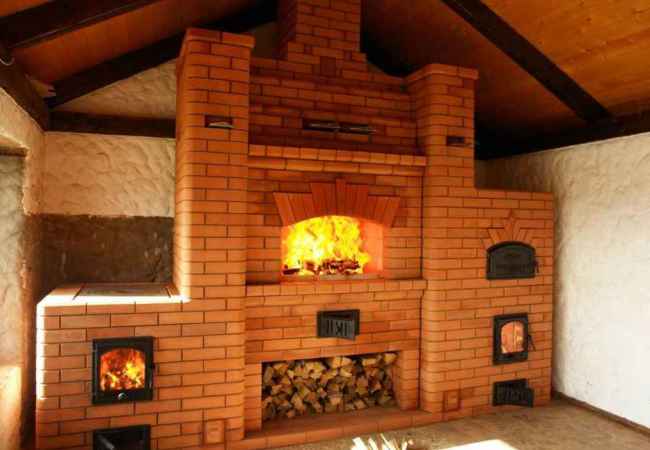

Brick fireplace stove can be equipped with an oven, hob, water circuit
They run on alcohol fuel, therefore, they require compliance with the operating rules. The mixture for ignition is poured only into a special compartment, and then ignited. The biofireplace is economical - you only need to refuel once every 3-7 hours. Manufacturers offer a modern way to control the intensity of combustion - from a smartphone or remote control.
Brick models
To consider the device and features of brick modifications is the example of the Annushka model, designed by E. Doktorov. The structure is mounted at the outer or inner wall of the building.
In the classic project, the furnace hole was 0.2 m2, and the width was 2/3 greater than the height. For good heat transfer and no smoke, the depth and height of the firebox are correlated as 1: 2 or 2: 3. The chimney is 8-14 times smaller than the firebox. Other features of the author's fireplace include:
- the presence of a foundation is 15-20 cm more than the fireplace space;
- arrangement of screening made of galvanized iron. Its size is 100x200 cm;
- the protrusion of the upper edge of the screen 35-36 cm from the firebox and 7-8 cm from the walls;
- use of ceramic insulators;
- the presence of a heat-resistant layer near wooden walls - asbestos or fire-resistant drywall is used;
- primary laying of materials dry;
- thermal insulation of the chimney exit point to the attic or second floor
- outlet of the pipe head 50 cm from the roofing.
The brick unit is finished after complete drying.
Gas devices
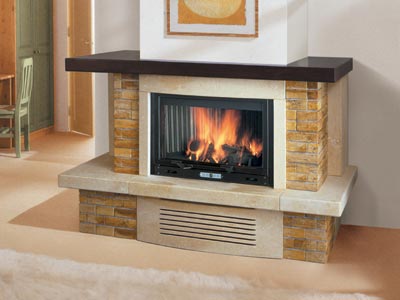

A gas fireplace requires a permit and a working chimney
The structures are connected only after obtaining permission from specialists. Installation takes a long time, but the finished product almost does not emit combustion products, does not require frequent cleaning from soot or soot.
Metallic options
You will need wood-burning fuel for the bookmark. Similarly, brick ones require the construction of a chimney, but the foundation is made in the form of a layer from below. The factory door made of fireproof glass allows you to view the flame.
Homemade long burning metal stove
From the materials we need:
Homemade stove elements
- A round barrel that will serve as a furnace body. Do not use an old corroded barrel - this oven will not last long. The barrel must have thick walls to withstand higher temperatures.
- Steel pipe.
- Building level and marker.
- A hammer.
- Hacksaw for metal.
- Mallet.
- Channel.
- Ax.
- Steel sheet.
- Welding machine.
The process of work will be associated with a certain noise and dirt, so it is better to assemble such a stove on the street or in the garage.
- Determine the location of the homemade oven.
Cooking a body from a steel barrel
Given its low external qualities, it is better to use a non-residential area for this. If the dacha is equipped with only one room, then the stove can be placed in the corner, creating a small decorative screen that covers the structure. Take a metal barrel and, using a marker, mark the top with the markings along which you will need to cut off the top. Determine immediately how much tank volume is needed for laying firewood. The more wood you put in, the longer the stove will burn out.
Remove the top and weld on the legs
Preparing a hole for a branch pipe
Only first you need to cut off the sidewall from it. You will get a steel circle. Using the disc nozzle on the grinder, grind this circle from all sides - it should smoothly enter the inside of the barrel.
We make a hole in the center of this circle, the diameter of which is equal to the diameter of the steel pipe. Take the channel and mark on it for 4 parts, which, like blades, will be welded to the steel circle of the cover. Cut the channel into 4 parts with a grinder and weld them at the same distance along the diameter of the steel circle. Weld the steel pipe in the center of the pressure circle.
Welding the pipe to the steel circle
Making the oven lid
Hole in a circle
Oven base
Given the low weight of the steel structure, there is no need to build a separate foundation for the furnace. It will be enough to lay out a brick base that is larger than the oven itself. We connect a homemade stove to the chimney.
Connecting the stove to the flue pipe
One rule applies here - put the pipe sections on top of each other in the opposite direction of the smoke movement.
In principle, this can be considered a structure ready for use. But during the heating process, you can notice how much the walls of the stove are heated. Therefore, for ease of use and safety of life, it is better to equip a protective screen.
Brick protective shield
The protective shield can be folded out of bricks. For this, ordinary red brick is suitable, which should be laid out at a distance of 10-15 cm from the walls of the oven. The brick screen, in addition to protection, will increase the heat transfer even after the stove burning stops.
If you plan to install a homemade long-burning stove in a separate boiler room by connecting a heating system to it, then there will be no point in installing a brick protective screen.
- Remove the cover and take out the device that presses the wood.
- Load fuel up to the set mark. The critical line is the chimney pipe. Firewood should not be higher than the level of its placement.
- The better the wood is pressed and tamped, the greater the combustion process will take place in the firebox. Therefore, make sure in advance that the firewood is not large and, laying them in rows, lay chips between them.
Pack the wood well and fill the space with sawdust
The moisture content of the wood should not exceed 20%. Therefore, if you are taking firewood from a shed or cellar, provide an adequate supply of firewood, which will lie in a dry house for a while. A stylish firebox that you can build with your own hands will allow you to beautifully equip such a storage system.
Put the kindling material on top of the firewood. It can be sawdust, paper, brushwood.
Application features
If wood stoves are bought for heating a private house, then the manufacturer always adds instructions to them, which allows you to get acquainted with the basic rules of work. Such documentation contains absolutely all comments, even the recommended fuel moisture content is spelled out. But even a careful study of the instructions and adherence to all operating rules does not always allow you to avoid troubles.
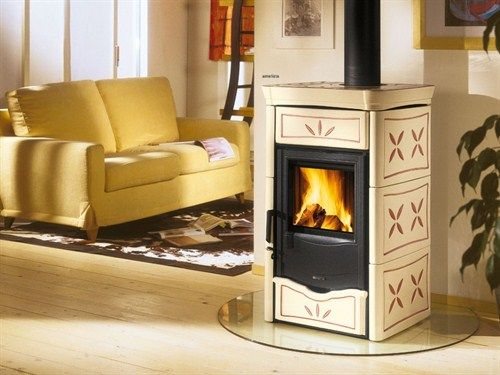

- When installing the device, pipes must be collected against the movement of gases, this will eliminate the settling of soot on the floor of the room;
- You should not be smart with the installation diagram, it should be simple so that, if necessary, it can be easily disassembled;
It should be borne in mind that the surface of the device is very hot, and the space near it should be safe and inaccessible to children.
Prices for the "fire-battery" stove
Fire-battery
The high productivity of the device is due to convectors located on both sides of the body. With the help of these structural elements, powerful streams of hot air are created, which then quickly spreads throughout the room.
For heating stoves, the manufacturer recommends using firewood, peat briquettes and pellets. Do not use any kind of coal or coke.
The compact size and shape of the stove allows it to be installed in a small room. Moreover, both near the wall and in the corner zone, since the device will take up the minimum area.

